‘Offsetted’ Art Exhibit Explores Humanity’s Relationship to Trees
A show on campus investigates how trees have been used as pawns in human schemes in and around New York City.
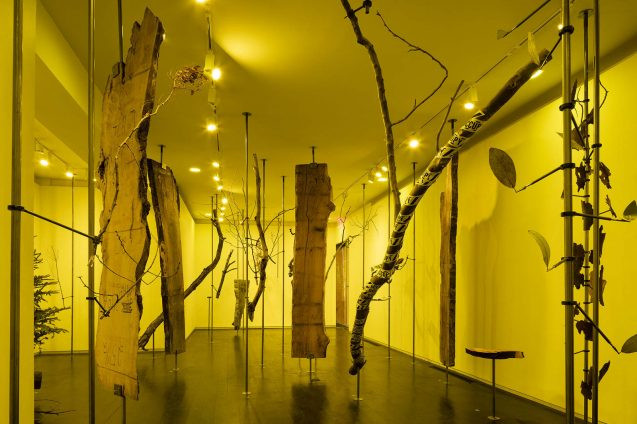
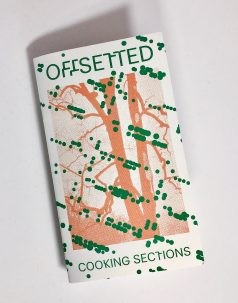
Tree branches, tree trunks, slabs of wood, leaves, trunk cores, and even a small whole pine tree fill the Ross Architecture Gallery in Columbia’s Buell Hall. The items are mounted on and suspended from metal rods, and bathed in a yellowish light that brings out the warm browns of the wood.
This makeshift indoor forest is an installation called Offsetted by artists Daniel Fernández Pascual and Alon Schwabe, who together go by the name Cooking Sections. The installation is curated by the Graduate School of Architecture, Planning, and Preservation’s director of exhibitions, Irene Sunwoo, and assistant director of exhibitions Tiffany Lambert.
The installation is accompanied by a small booklet which contains 42 short essays, one for each item on display. If, when you enter the gallery, you’re bewildered by the light and the presence of branches, bark, and leaves indoors, reading through the essays will quickly ground you.
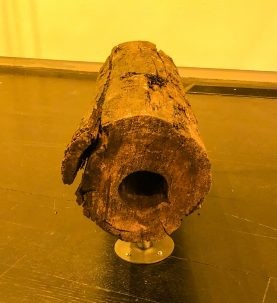
As the booklet explains, the show gathers specimens of New York area flora in order to illustrate the myriad human agendas that have altered and determined the fates of countless individual trees. From carbon offsets and storm water management to construction obstacles and trade-offs in development negotiations, trees in the city are politicized, managed, damaged, and manipulated depending on the whims of humans. Rarely are our city trees allowed to just be trees.
One item displayed in Offsetted is a section of the wooden water main built in 1805 by the Manhattan Water Company, which was founded by Aaron Burr. The infrastructure was a total failure due to the fact that the water piped through the logs was not potable. The project was abandoned, but Burr did make a profit from it. He used those profits to set up the Bank of Manhattan, which later became Chase Manhattan Bank.
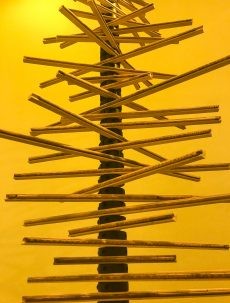
The section of wooden pipe displayed in the gallery has a large hole through its core. Chase Bank’s distinctive octagonal logo is, according to Cooking Sections, roughly based off the hollowness of these original wooden pipes. “Trees and freshwater in New York can be regarded as elements that served first as commodities and later as assets to control both space and people,” write the artists in their essay.
Another example that will be of particular interest to State of the Planet readers is specimen number 24, a selection of tree cores collected in Queens by the Tree Ring Lab at the Lamont-Doherty Earth Observatory. When they were collected in 2005, these cores were used so that scientists could learn about the climate history of New York City.
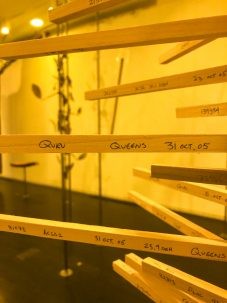
After the cores were analyzed at the Tree-Ring Lab, the USDA Forest Service used them to help develop i-Tree, a software tool that quantifies “the benefits and values of trees around the world,” according to the i-Tree website. The i-Tree software can analyze trees and forests across many different areas including carbon storage, storm water management, pest risk, cost benefit analysis, and human health impacts. Cooking Sections says that i-Tree’s offerings put “a price tag on urban canopies in order to protect them.”
While the i-Tree example is doubtless more benign than the Chase example, both demonstrate Cooking Sections’ thesis that humans have historically—and continue to—valuate and monetize the natural world around them based on our own interests, rather than appreciating and respecting nature’s inherent value. A tree’s worth is often seen in relation to people: How much will it clean my air? How many harvests can I get out of this tree? If I plant this tree here will they allow me to build my building higher over there?
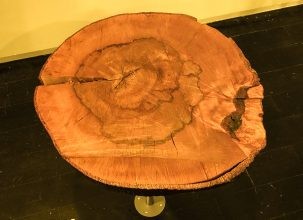
One of the interesting facts in the Offsetted booklet is that the city has guidelines for tree removal called Rules Governing Tree Replacement. Using a formula based on physical characteristics and health, you can appraise the value of a street tree and see how much it would cost to remove and replace elsewhere. “While these payments do help fund the responsibilities of the Parks Department to manage New York street trees, the focus on monetary value of each specimen neglects symbiotic and ecosystemic relationships of trees with their surroundings,” write the artists. “Economic valuation ultimately keeps trees as disposable service providers for human benefit.”
Offsetted is up in Buell Hall’s Ross Gallery until June 8th, 2019. If you’re interested in learning more about trees, urban planning, and New York history, it’s definitely worth a visit. And be sure to pick up a copy of the Offsetted booklet on your way in so that you can read about the significance of each specimen.
